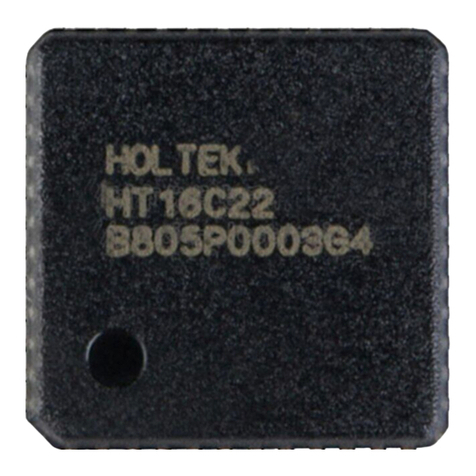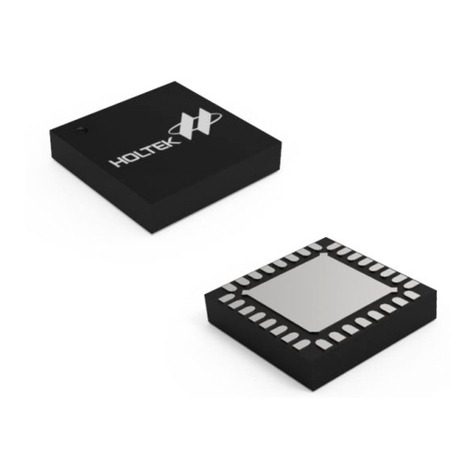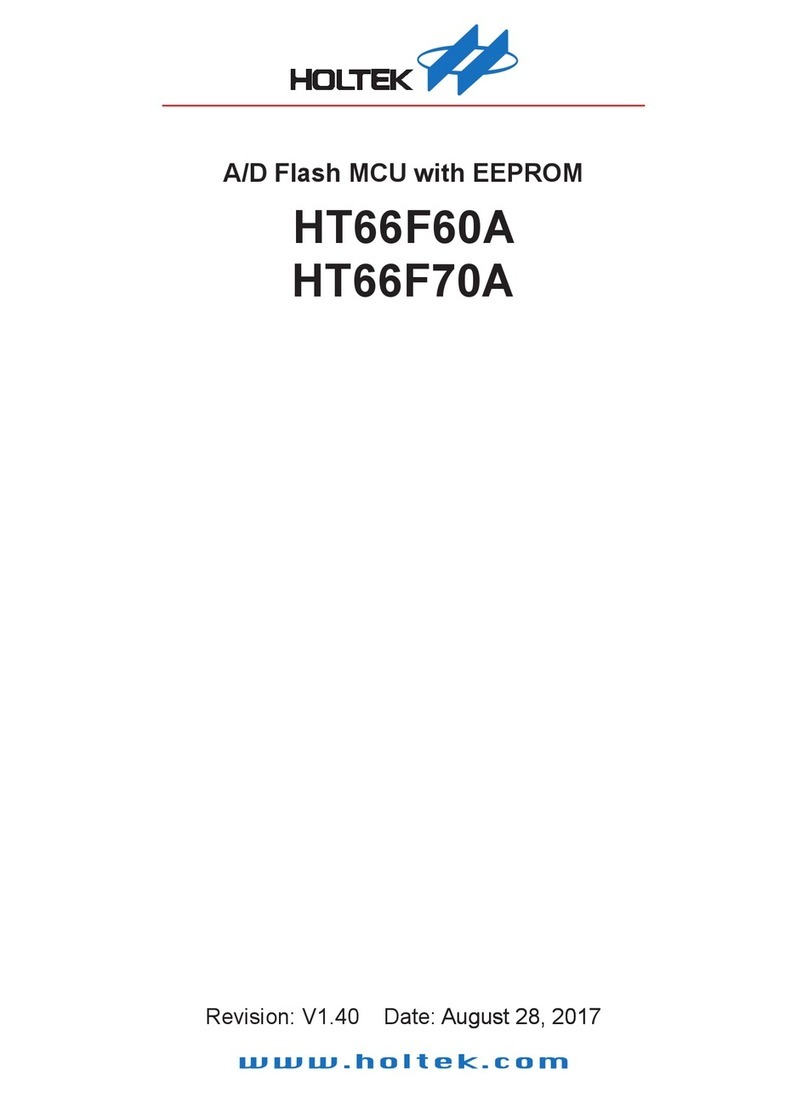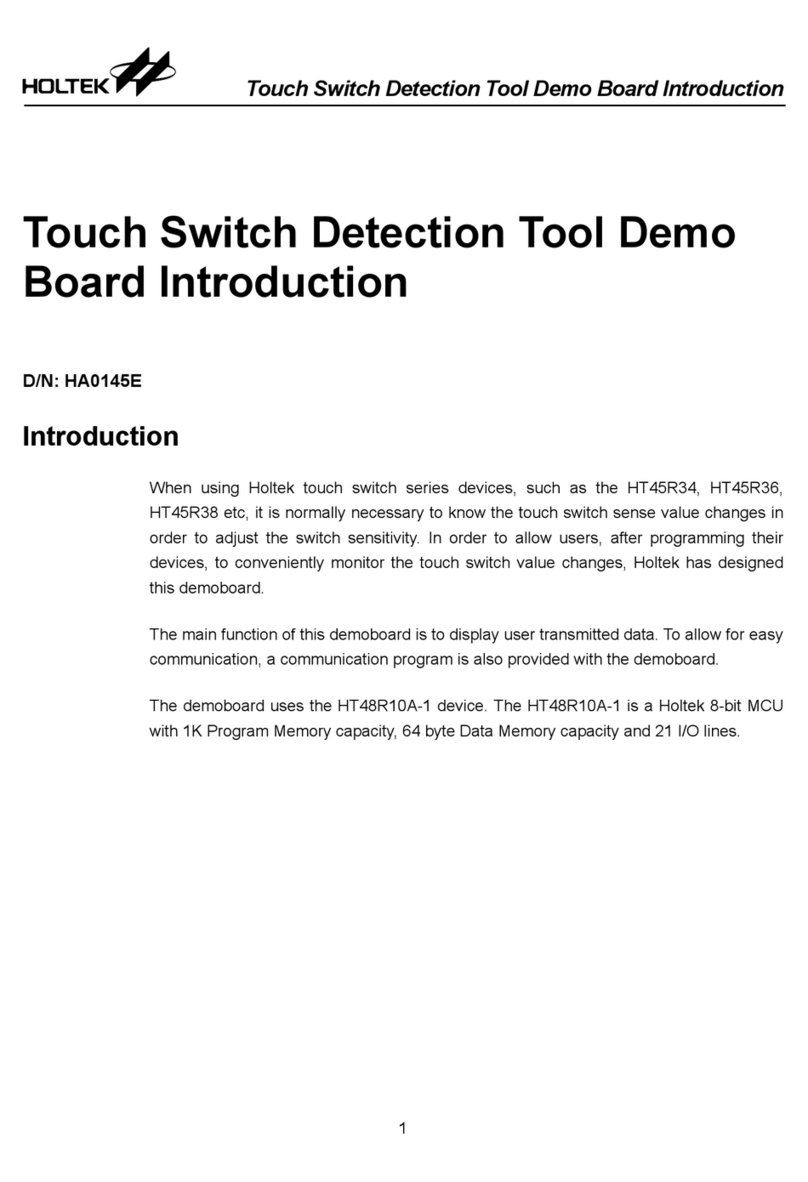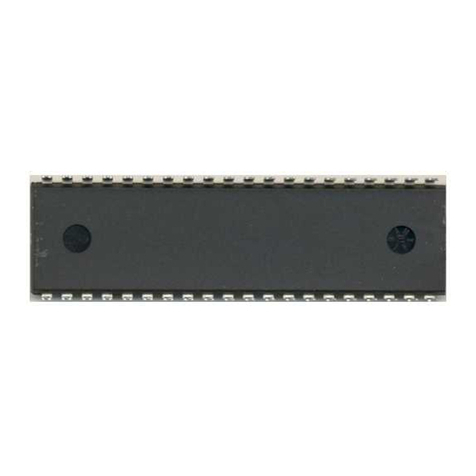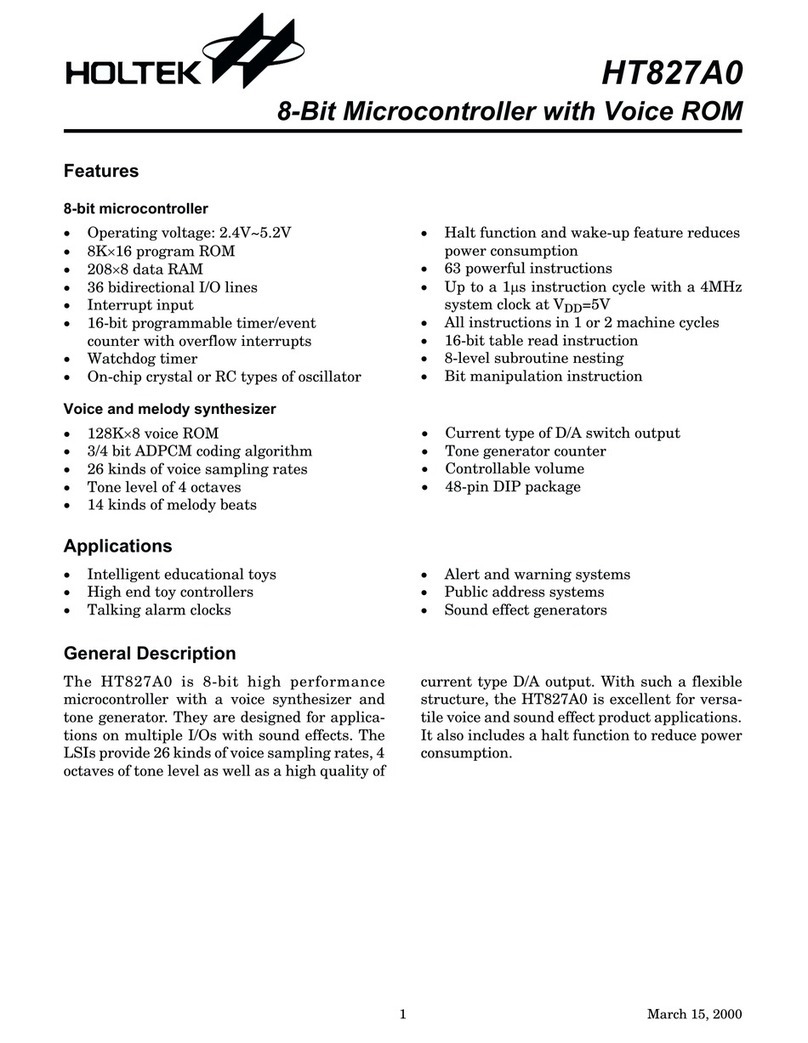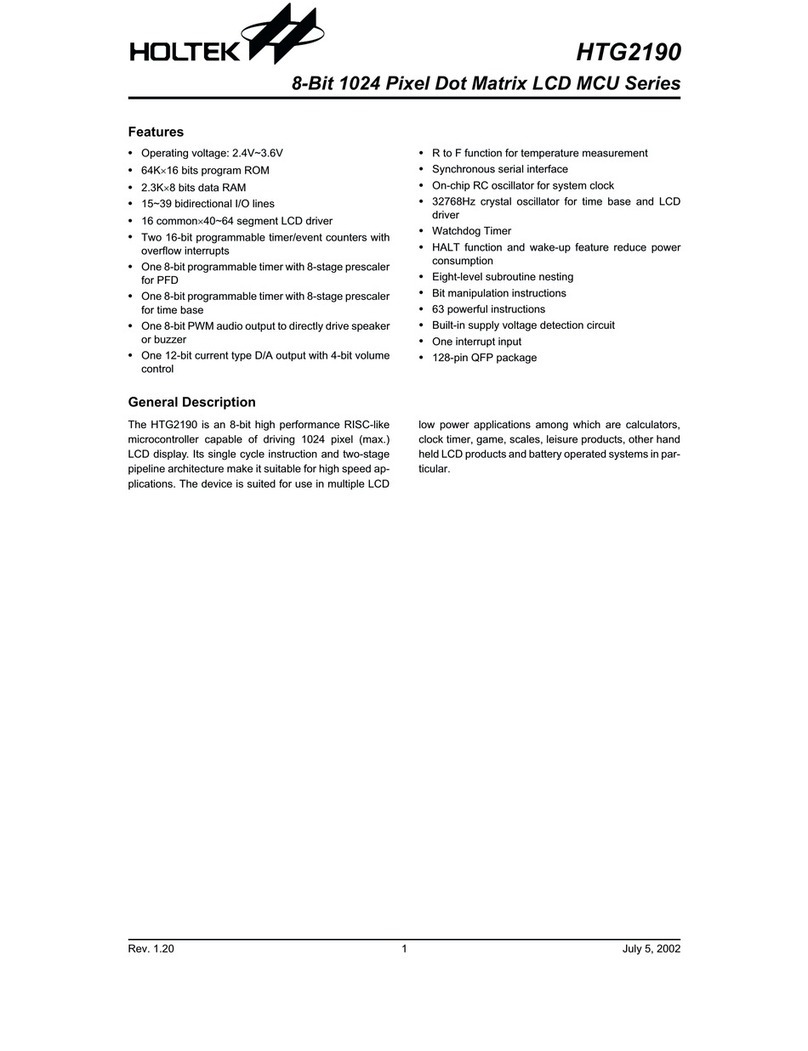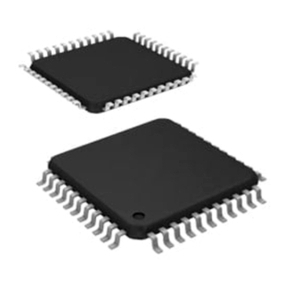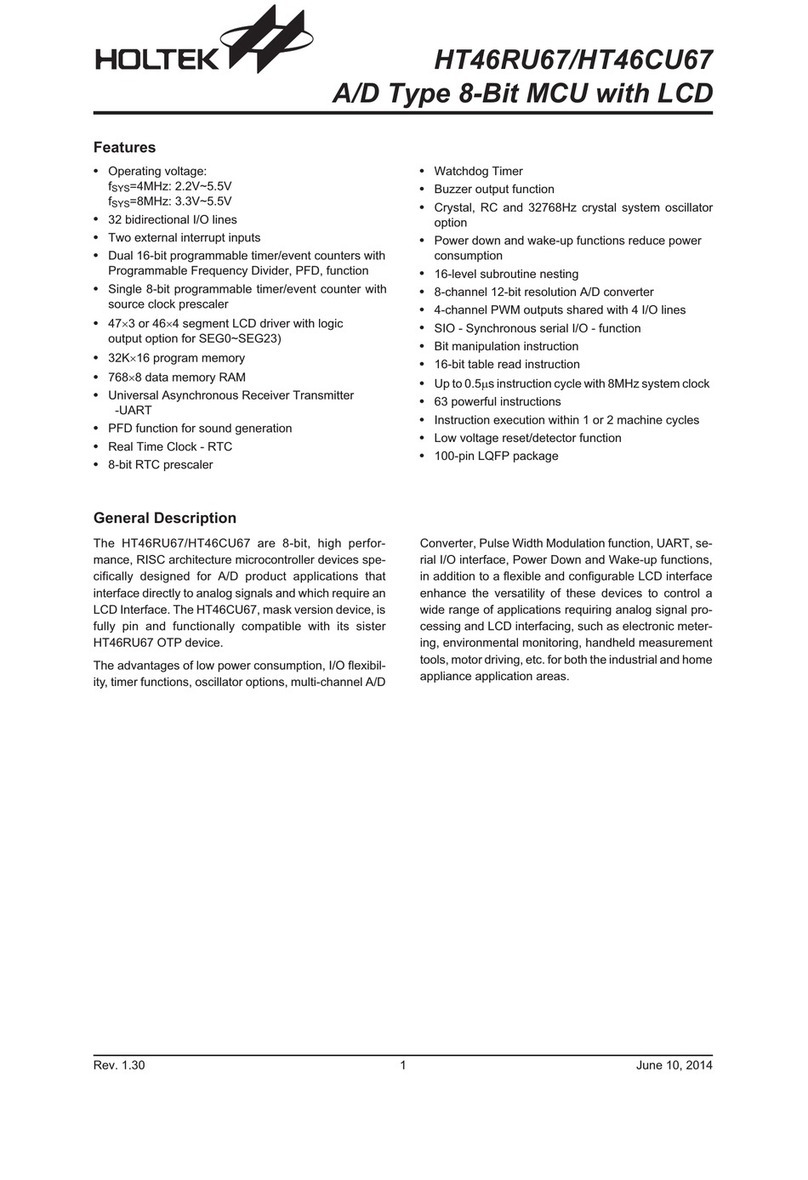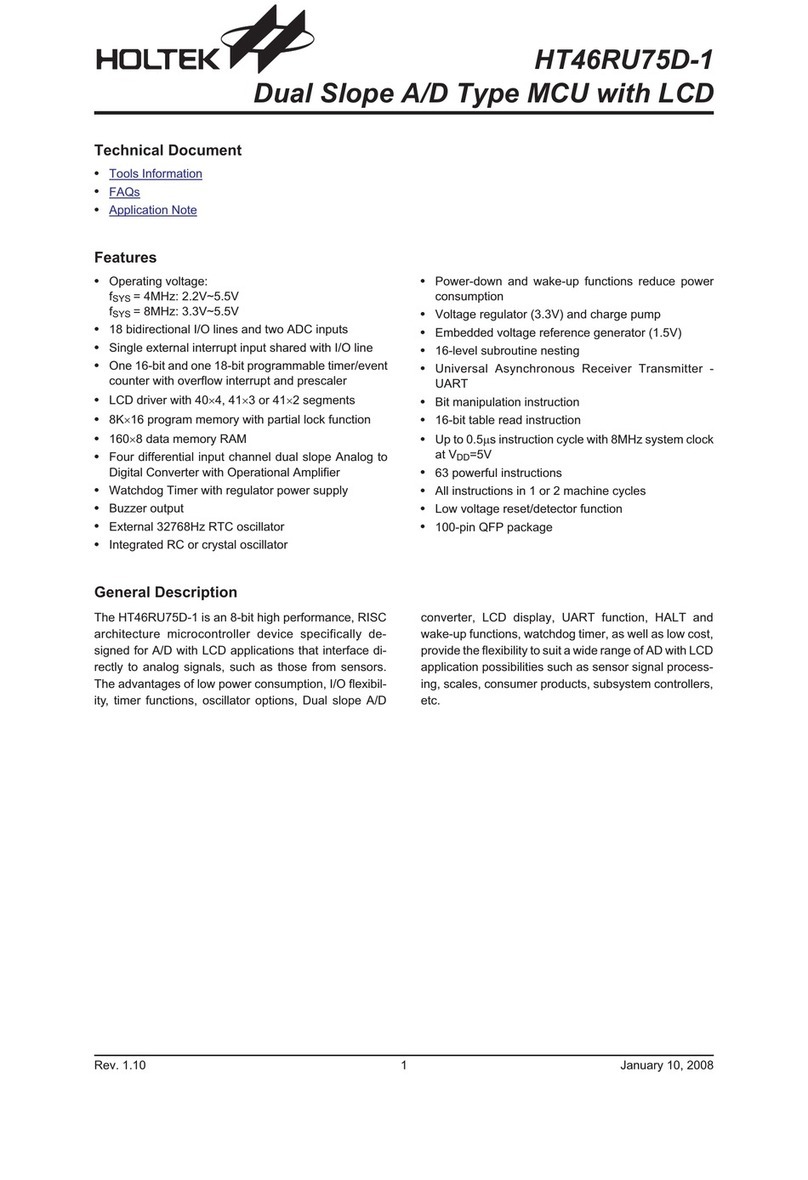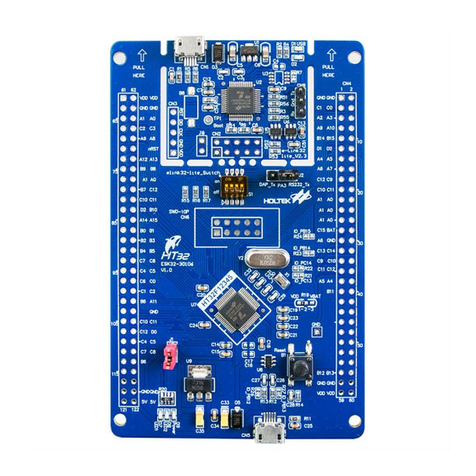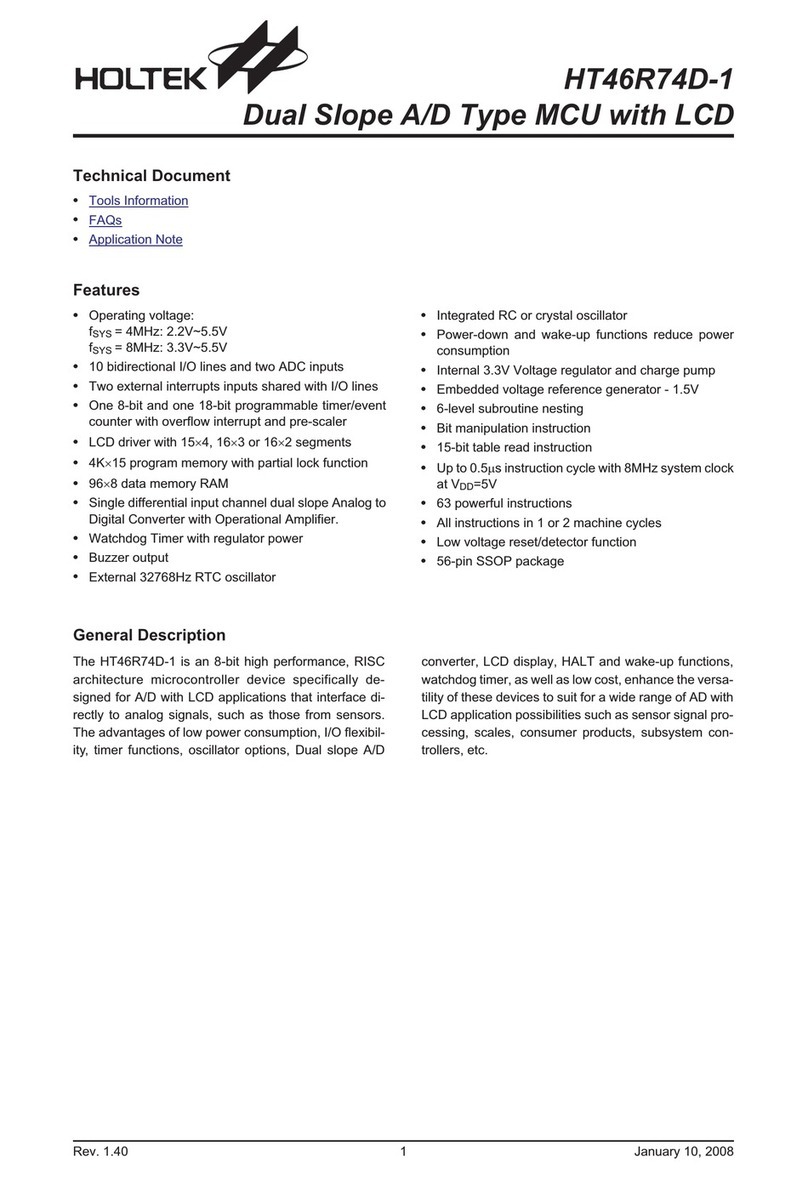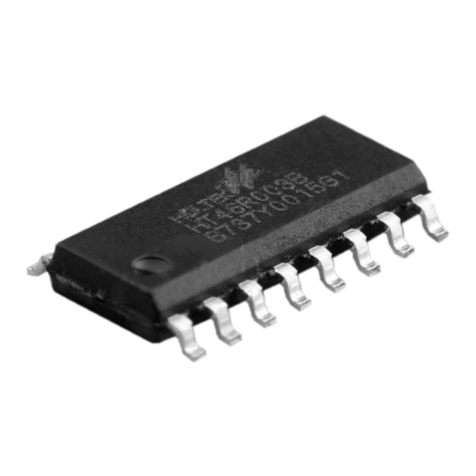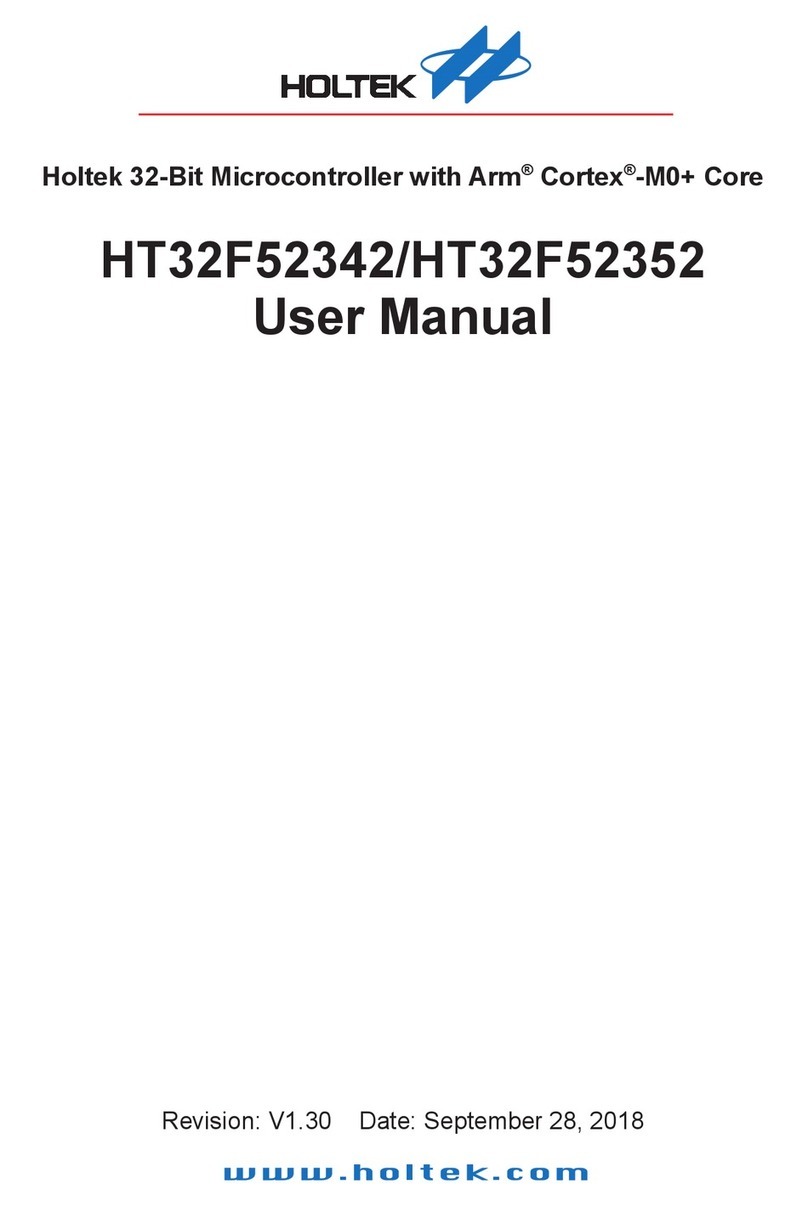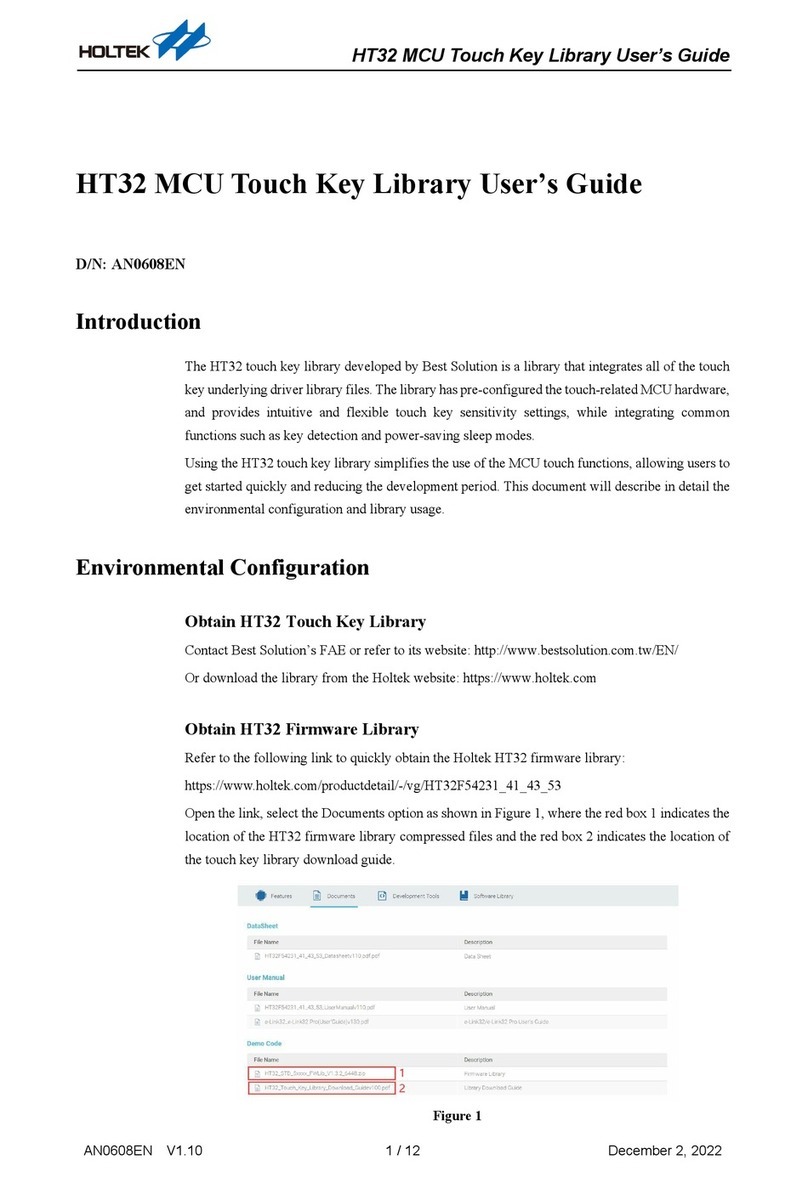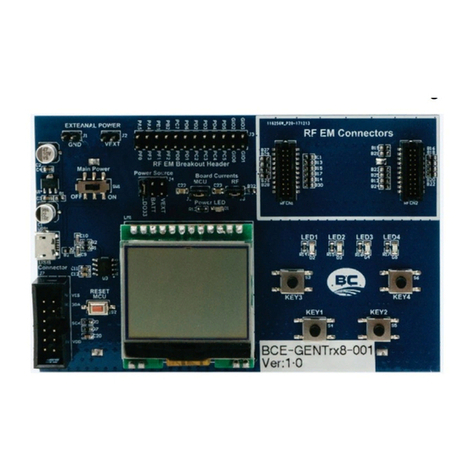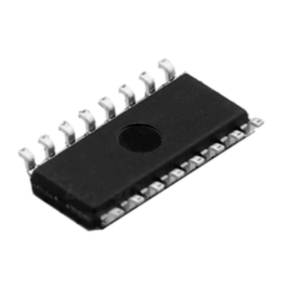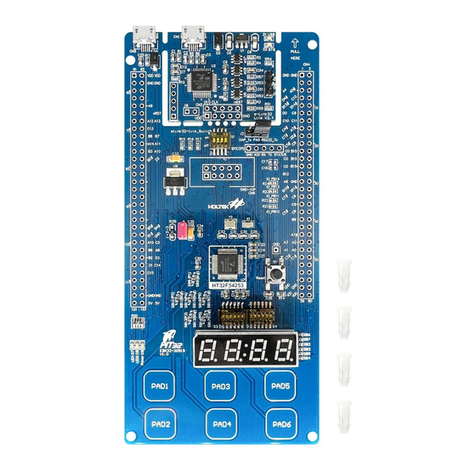
HT32 MCU Hardware Development Guideline
AN0630EN V1.00 2 / 12 December 15, 2022
VBAK
There is a backup power domain VBAK in the MCU types which have a VBAT pin. The backup
power domain, VBAK, provides power to the low speed internal oscillator, LSI, low speed
external crystal oscillator, LSE, power management, backup registers, etc. This means that when
the VDD is turned off the contents of the backup registers will be retained and the RTC circuit,
power management circuit and low speed clock circuits can continue running. The operating
voltage range of the backup domain can be obtained from the datasheet.
Note: The VBAT pin must not be allowed to float. When the backup power is not used, the
VBAT pin must be connected to the VDD pin. A special case, is for the HT32F52352
which is supplied in the 33 QFN package, where the VBAT pin is not externally bounded.
Here, for pins 13, 14 and 15 which are the backup power domain pins, a 100Ω resistor
should be connected between the pins and VDD. This will ensure that VBAT has power,
which is implemented by the internal ESD protection diode connected to VBAK.
LDO
An internal voltage regulator generates a 1.5V or 1.8V voltage which is provided to the core
power domain, VCORE. The output pin, CLDO, should be connected with an external capacitor
whose value can be obtained from the CLDO pin description in the corresponding datasheet.
The LDO has several power modes, which can be obtained from the PWRCU section of the
corresponding datasheet.
USB LDO
An internal USB regulator output can provide power to USB PHY. The VREGO output pin should
be connected with an external capacitor whose value can be obtained from the VREGO pin
description in the corresponding datasheet. Because the MCU power schemes vary with different
types of the MCU, refer to the corresponding datasheet and user manual for the actual parameters.
The output voltage of the USB regulator can be configured based on actual requirements. Refer to
the PWRCR register description in the PWRCU section for the configuration and voltage ranges.
VLCD
For the MCU types with an integrated segment code LCD peripheral, VLCD provides power to
most of the LCD circuits, including the COM & SEG drivers, analog switches/MUX, resistor
ladder network and so on. The VLCD voltage can be supplied by either an external power source
or the internal charge pump circuit. When the internal charge pump is selected to provide the
LCD power, the VLCD pin must be connected to a 2.2µF capacitor which should be located as
close as possible to the VLCD and VSS pins. If VLCD is supplied by external power, the VLCD
pin must be connected to a bypass capacitor.
VDDA
VDDA is the analog power for the A/D converters, D/A converters, voltage reference buffers, and
comparators. VDDA, which is supplied by the VDDA pin, must be equal to the VDD value, see
the note below. If any analog circuit mentioned above is used, it is recommended to add a 2.2µF
regulation capacitor in parallel with a 0.1µF bypass capacitor or connect a normal bypass
capacitor. The VDDA operating voltage range can be obtained from the ADC, DAC, CMP and
VREF electrical characteristics in the datasheet.
